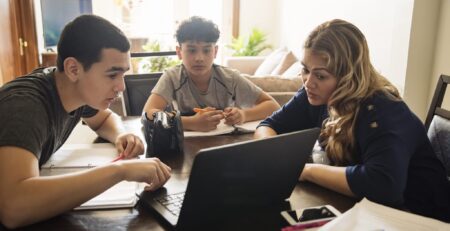This is custom heading element
One in 10 students in the U.S. is an English- language learner, and by 2060 nearly one in five residents is expected to be foreign-born. For teachers, that means classrooms filled with children conversing in Spanish, Chinese, Tagalog and Arabic.

The state of Georgia recently has become part of a shifting educational model that recognizes speakers of English and speakers of other languages have a lot to teach — and learn from — each other.
“Research is very clear: Well-structured bilingual education provides the best learning outcomes both for English learners and for English speakers learning a new language,” says Sue Kasun, assistant professor of language education and director of the university’s Center for Transnational and Multilingual Education, introduced by the College of Education and Human Development last year.
Not a new concept nationwide, dual- language immersion classrooms began cropping up around the state in the last decade. In the model, English speakers and speakers of a partner language — most often Spanish — learn together. Students spend half their school day studying English, language arts and social studies in English and the other half studying science, math and the partner language in that language. Experts say that having speakers of English and the partner language study side-by-side gives students an authentic context for practicing their developing language skills.
With the Center for Transnational and Multilingual Education, the university is spearheading the effort to prepare Georgia educators to teach in these classrooms. (Fifty public and charter schools in the state offer dual-language immersion in Spanish, Chinese, French, German or Japanese.)
“People are crossing borders, both physically and metaphorically, more each day,” says Kasun. “Our work, in part, is an effort to increase the multilingualism of all people in recognition of how we are coming into greater contact with each other, whether it be through immigration, travel or language learning.”
While other universities have centers that focus on pedagogical research into language teaching and learning, the Center for Transnational and Multilingual Education is a pioneer in its emphasis on the cultural implications of living in an increasingly globalized world.
“We want to focus on transnational capacity-building that everyone could benefit from, so that we understand each other better the world over,” she says.
The center has begun to build a body of research into best practices in the dual-language classroom that its faculty will impart to future teachers.
Yet Kasun says, “Before we even get to pedagogy, caring, openness to other backgrounds and wanting to support all kids is the first step to good teaching.”












Leave a Reply